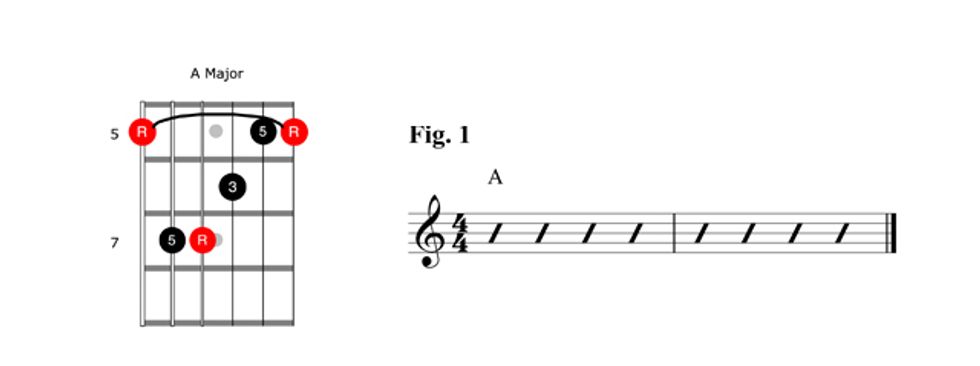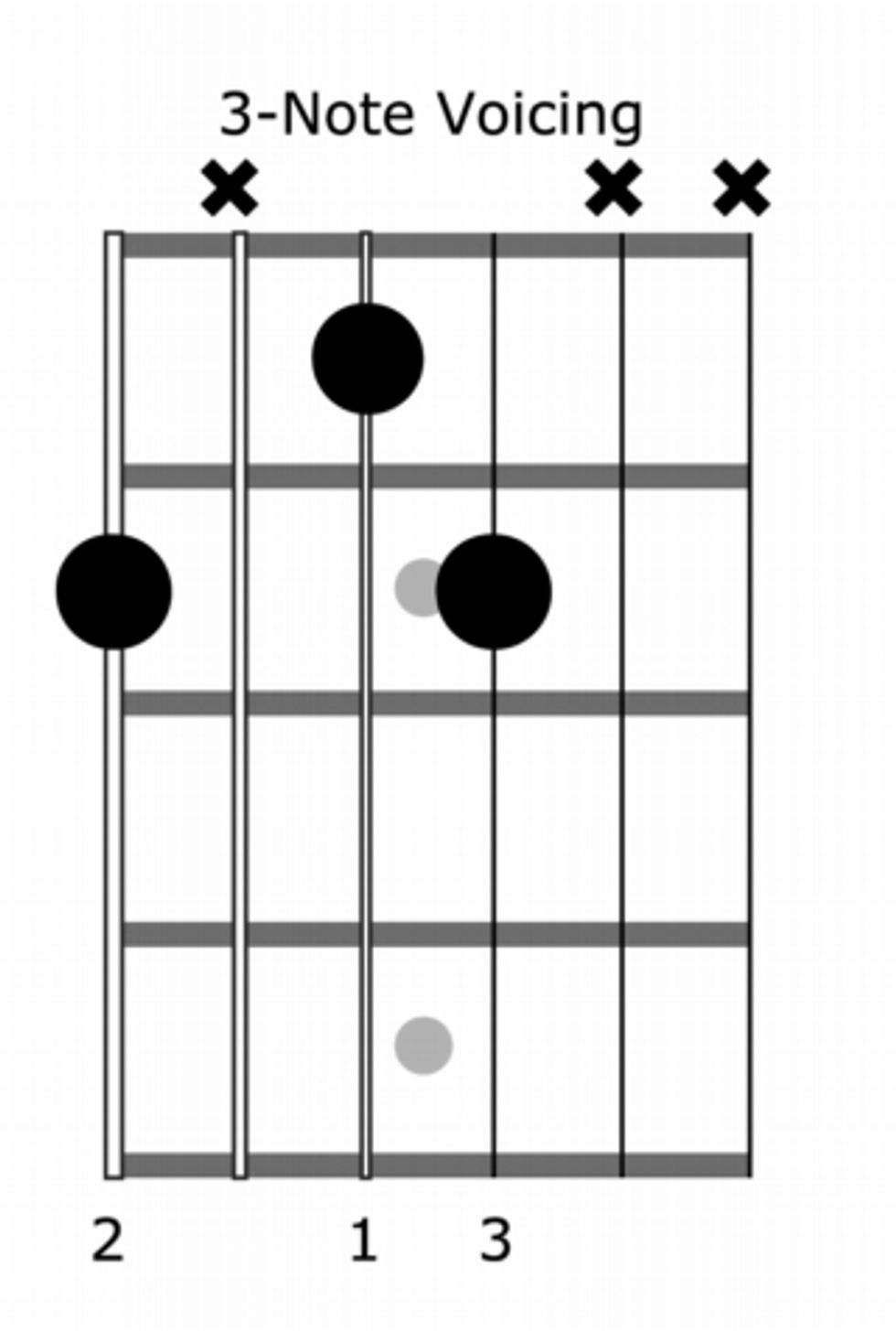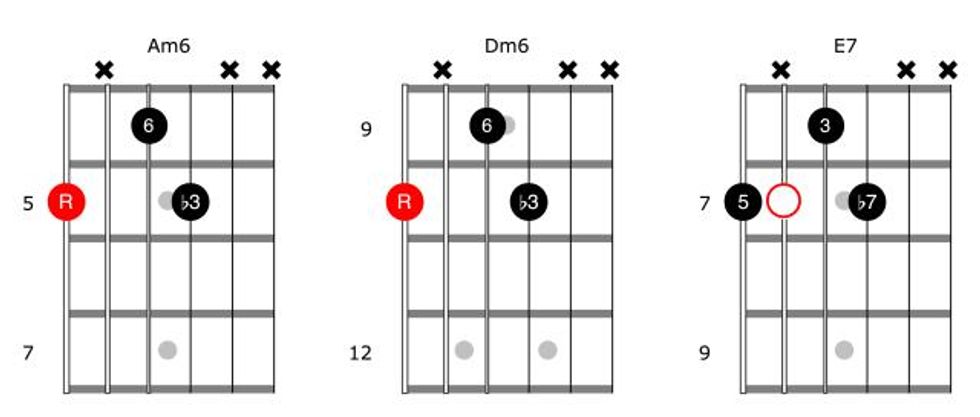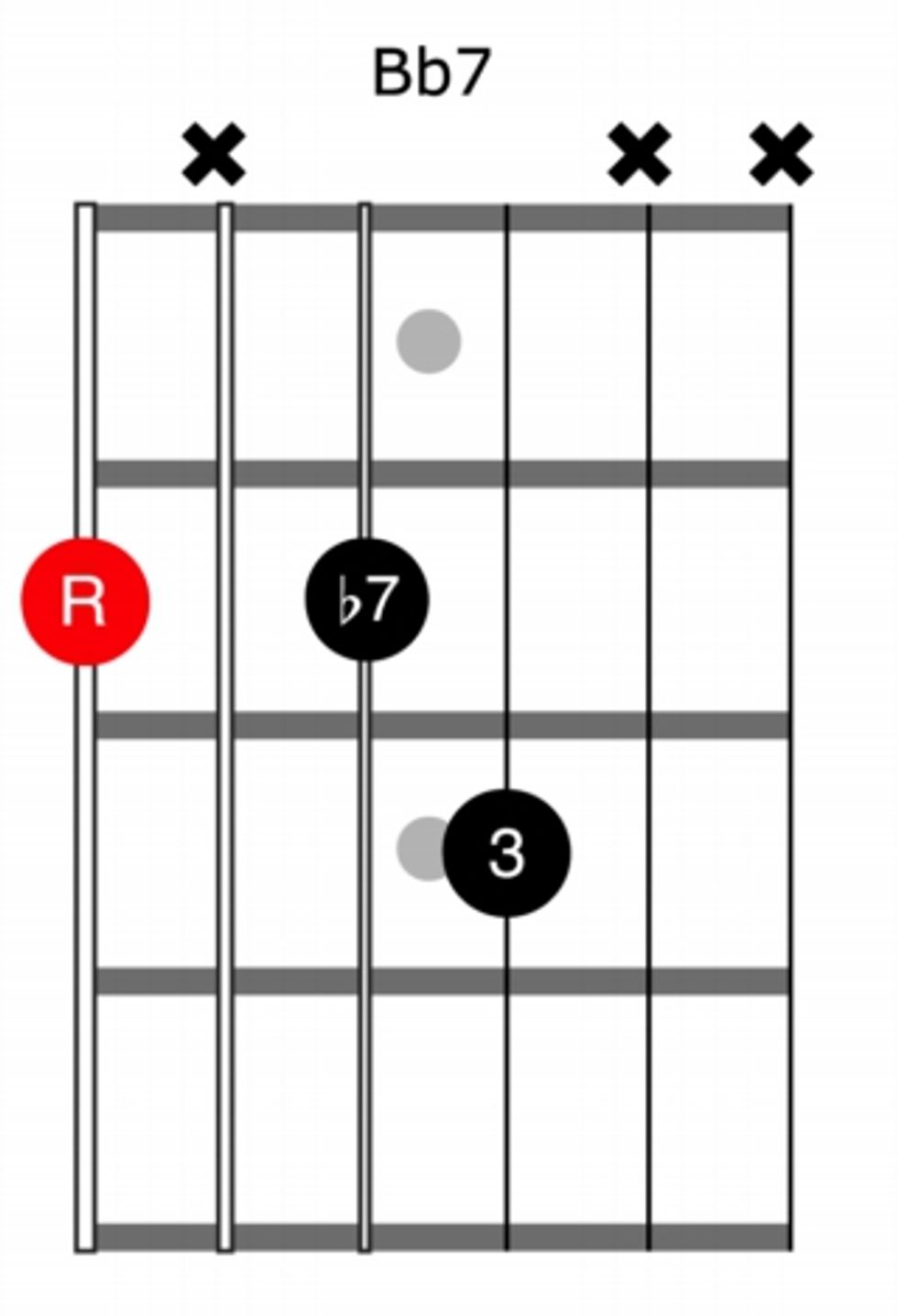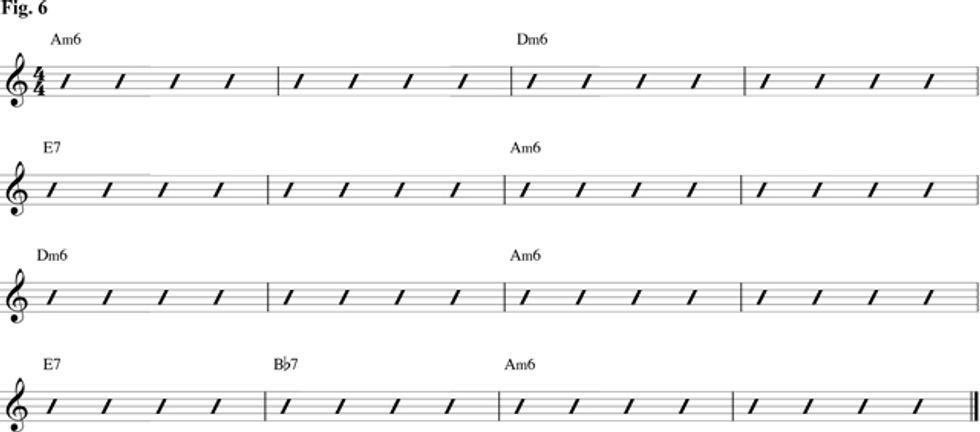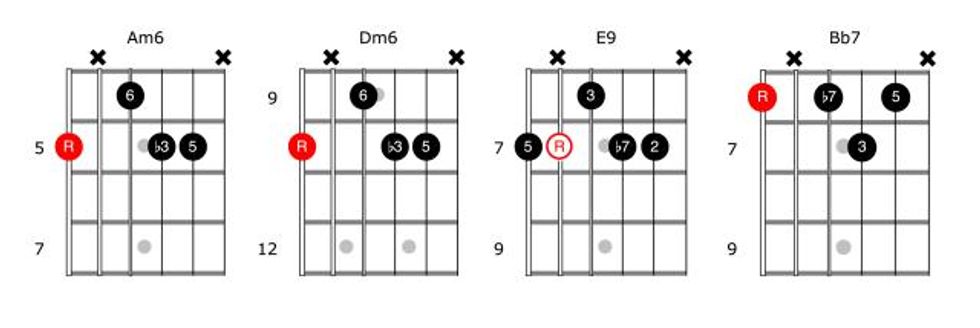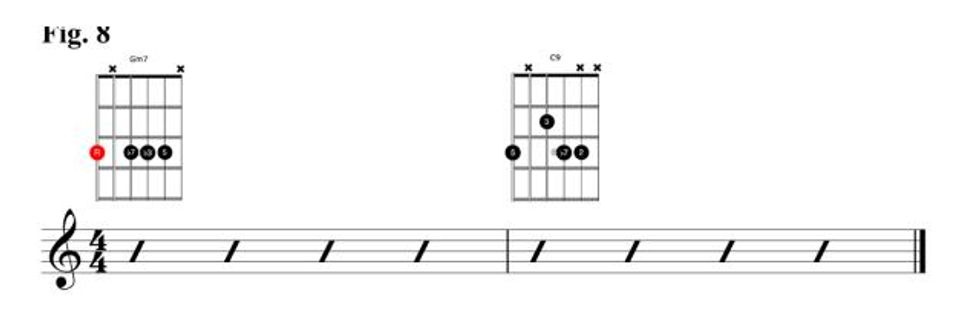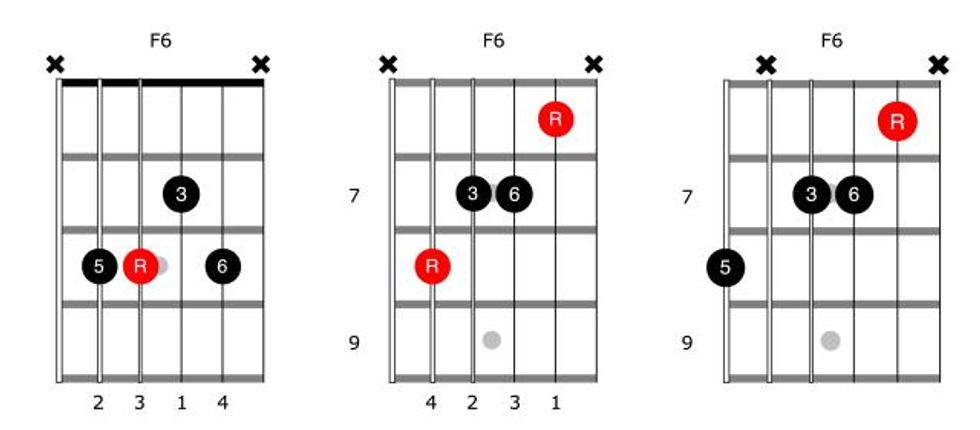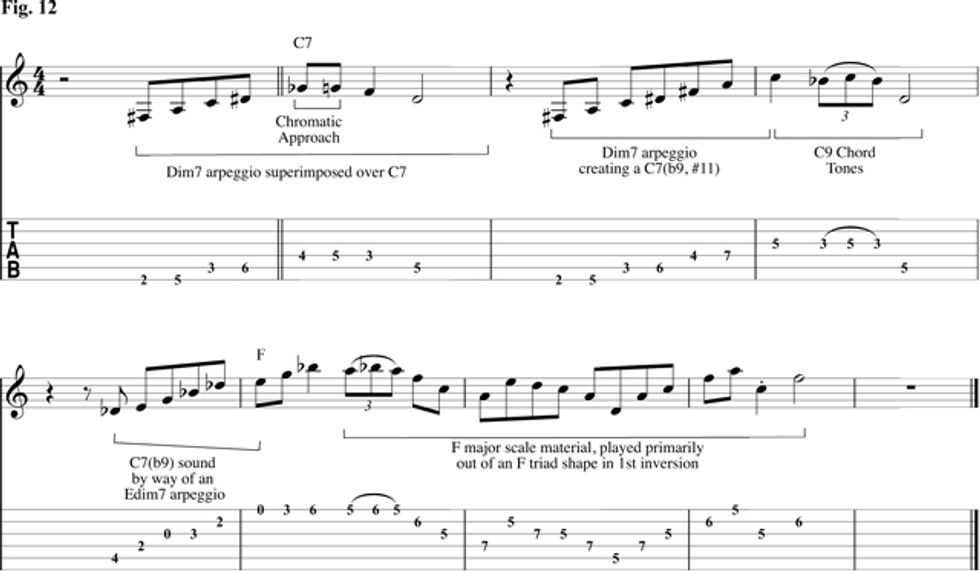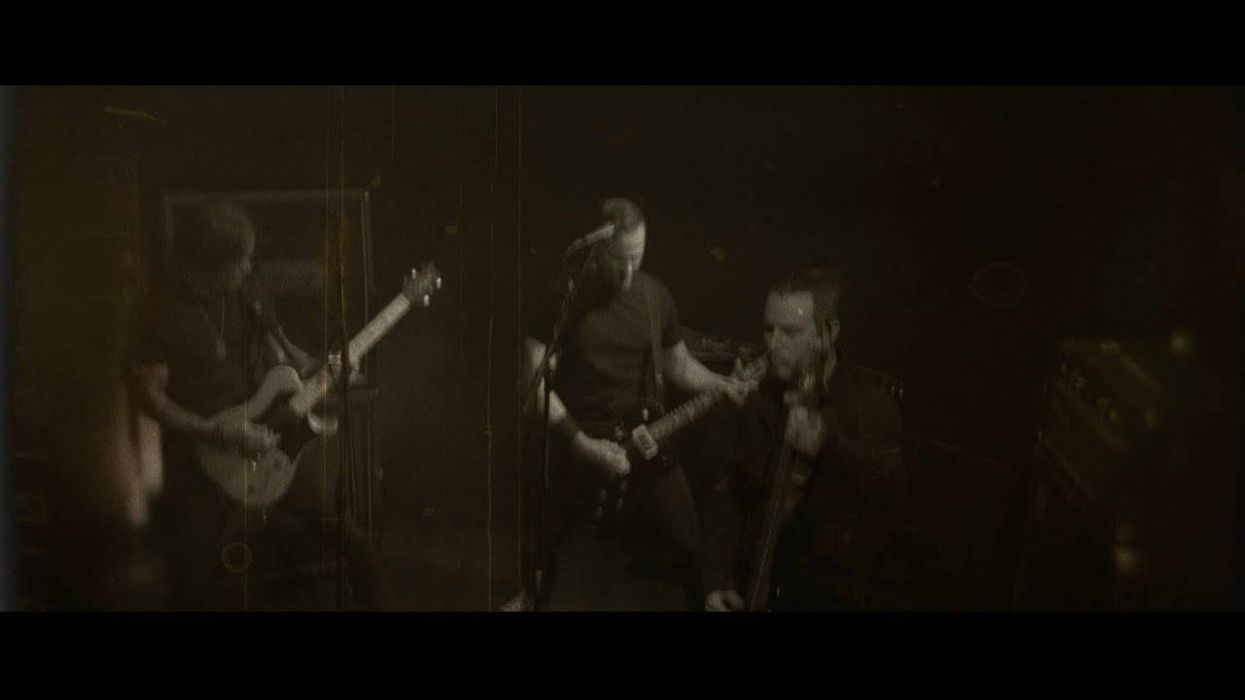Chops: Intermediate
Theory: Intermediate
Lesson Overview:
• Understand the basic elements of Django Reinhardt’s style.
• Develop three- and four-note chord voicings based in the Gypsy style.
• Create arpeggio-filled lines using triads and diminished shapes.
Click here to download MP3s and a printable PDF of this lesson's notation.
In this lesson we’ll look at the elements that make up an exciting style of jazz known as Gypsy jazz. Inspired by the fiery improvisations of American jazz masters like Louis Armstrong, Gypsy jazz was, however, not developed in the United States. Gypsy jazz came from Paris in the form of a string band founded by guitarist Django Reinhardt and violinist Stéphane Grappelli, called Le Quintette du Hot Club de France, which set the precedent for the Gypsy-jazz ensemble and instrumentation. In the original quintet, Django and Stéphane were supported by two rhythm guitars and upright bass. To this day, one can find “Hot Club”-style groups with similar configurations flourishing throughout the world.
As a guitarist, it is important to know about Django Reinhardt, as his contribution was profound and his influence far-reaching. Chances are, many of the guitarists you’d call a guitar hero—no matter their style—would count Django’s playing as influential. Born in Liberchies, Belgium, on January 23, 1910 to a family of Manouche Gypsies, he was given the Romany name Django, which means “I awake.” Django started playing the violin, followed by the banjo-guitar, which he excelled at, and at a very young age Django was a working musician in the dancehalls of Paris.
In 1928 Django’s bright playing career was nearly ended. After returning home from an evening gig, the caravan he called home was set ablaze by a candle that ignited celluloid flowers made by Django’s wife, Bella. Both survived the blaze but Django was badly injured. He suffered extensive damage to his left hand thereby greatly diminishing his ability to use his ring finger and pinky. During a long recovery period Django was able to relearn the instrument using his fretting-hand thumb and first two fingers.
Check out this videoto see Django in action (Django’s entrance is at approximately 2:28). It’s amazing to see how he was able to travel the fretboard in such a fluid manner, despite the limitations due to his injury. You can also see how he used the injured fingers to play certain chord shapes. At first listen, this music seems daunting—especially given the virtuosity of the masters. But hopefully you’ll be equipped to begin your journey into the land of Gypsy jazz with this primer. So, let’s get started!
Rhythm Guitar
To capture the sound of Gypsy jazz, a focus on the rhythm guitar is a must. For now, we’ll bid open-string chord voicings adieu and focus exclusively on fretted chord grips. This is important because you must be able to control the ringing of the strings. Let’s start with an A chord (using the barred E shape) and play quarter-notes (Fig. 1).
While strumming these quarter-notes, don’t let the chord ring from one beat to the next. To achieve this, release the pressure of your fretting fingers between each strum. This creates a little separation between beats. It’s the same technique swing guitarists use when playing four-to-the-bar style comping, à la Freddie Green.
We’ll tweak things a bit with Fig. 2. On beats 1 and 3, focus on picking only the bottom few strings, and on beats 2 and 4, strum all the notes of the chord. Because the typical Hot Club group lacks drums, the rhythm guitar sonically fills this role. By playing beats 2 and 4 with more snap of the wrist from your picking hand, you can achieve a snare drum-like sound that will help things groove. Also note a common alternate fingering for the A chord.
Three-Note Voicings
While barre chords are used in Gypsy-style comping, three-note voicings are also common and are relatively easy to play. Fig. 3 shows a three-note voicing that’s finger-friendly and has multiple uses.
When playing this chord, be sure not to play the 1st, 2nd, and 5th strings. You can use your 2nd finger to block the 5th string, which allows you to strum through the shape. This chord has multiple functions, depending on which note you determine to be the root. Two common chord functions of this shape are the minor 6 chord and a rootless dominant 7. The classic tune “Minor Swing” can be played with only four chords, and you can play three of those four chords using the voicing from Fig. 3. You can see, in Fig. 4, that Am6, Dm6, and E7 are all played using the same chord shape. The empty circle in the E7 indicates the root—don’t play this note. It's there for you to visualize the location of the root, allowing you to create other dominant 7 chords by moving the shape up or down the neck.
With the addition of another dominant 7 chord shape in Fig. 5, we’re now ready to play the chord progression to “Minor Swing.”
Before we dig into the progression, check out the following YouTube clip. This video features Django and Stéphane with the original quintet playing “Minor Swing.” Pay special attention to the groove that is created by the rhythm guitars.
Now it’s your turn. Try playing the progression in Fig. 6 with the three-note voicings.
We can fill out the previous voicings by adding a note on the 2nd string to each chord shape, as illustrated in Fig. 7. In doing so, we add the 5 to the minor 6 chord and the 9 to the dominant 7 voicing. The shape we’re using to play Bb7 has the 5 added to it, as well. Try playing the progression in Fig. 6 with these expanded voicings.
Django also recorded American jazz standards. Here are a few voicings we’ll need to play some of these standards. Let’s start with a minor 7 voicing that flows nicely into the rootless dominant 9 we’ve just learned. In Fig. 8, the chords Gm7 and C9 create a common progression found in jazz standards called the IIm-V progression.
Next, we’ll add the tonic (or I chord), which in this case is an F major chord, to this progression to create a IIm-V-I progression. We could use a barred F chord, but we can spice it up a bit by adding the 6 to the triad to create an F6 chord. The 6 is a common tone added to the triad, not only for comping but also for solo lines. (We’ll explore the latter a bit later.) In Fig. 9, you can see a few useful major 6 voicings.
Apply these chords to the A section of “Honeysuckle Rose,” as shown in Fig. 10. Use the first voicing in Fig. 9 to play the F6 in this example.
Take Your Pick
Let’s shift our focus to lead playing. Before we dig into some of Django’s lines, let’s talk picks. In this style of playing, thicker picks are preferred over thin ones. Check out pick maker Michel Wegen’s Gypsyjazzpick, which is 3.5 mm thick, and his massive 5 mm Fatone pick. Experiment with various pick materials and thicknesses to find the tone you’re looking for with a comfortable feel. Your pick grip should not be tight. An excessive grip only adds tension to your playing—it’s fatiguing and slows you down.
If you are used to strict alternate picking, you’ll find Gypsy-style picking to be a bit different. Without going into great detail here, follow the general rule of playing a downstroke at each string change and you’ll be off to a good start. For more information on Gypsy jazz picking, check out Michael Horowitz’s book Gypsy Picking, which is available at DjangoBooks.com. At this site you’ll find other resources that may be helpful.
Lead Lines
Next, it’s on to lead playing. We’ll start with an overview of common elements and devices employed by Django in his line construction, and then look at a handful of his lines that incorporate these elements and devices.
The first device used to create lines is the arpeggio. Arpeggios play a big part in Django’s line construction. Not always using the extended arpeggios one might expect when dealing with jazz, Django created wonderfully exciting and colorful lines using the triad as the core building block. If you take time to listen and transcribe the melody to “Minor Swing,” you’ll find it is composed of arpeggiated minor and major triads.
Another device used in line creation is the chromatic approach. By approaching chord tones by either a half-step above or below (and in some cases, both) you can add color to your lines without having to learn exotic scales. When it’s time to expand the harmony beyond the triad, a common added tone is the 6. This happens over both major and minor chords. Incorporating major and minor 6 arpeggio practice into your workout routine is time well spent.
Django wove the elements and devices mentioned above (plus many others) into beautifully crafted statements. I’ve chosen a few licks to help illustrate this. You’ll find the bulk of the analysis is placed directly into the music notation. Given the seamless way Django combined these elements and devices, it seems like a clearer way to highlight them.
The first lick, Fig. 11, is a great example of chromatic approaches. The harmony he’s soloing over is a C7, and he approaches the root and the 5 from both above and below. You can hear this in the following YouTube clip of him playing “Honeysuckle Rose” at approximately 0:58 into the song.
The next two licks can be heard on Django’s recording of “Honeysuckle Rose” with the original quintet. In the following video, Fig. 12 is at approximately 0:51 and Fig. 13 is at 1:10.
Fig. 12 is over the A section of “Honeysuckle Rose.” Interesting rhythmic variety occurs in the first five measures of this line, and is created by starting a similarly crafted phrase on different beats of the measure. The first phrase starts on beat 3, the second on beat 2, and the third on the “and” of 2.
The diminished 7 arpeggio is used frequently, typically being played over a dominant 7 chord to create a dominant 7b9 sound. For example, over an F7 chord play an Adim7 arpeggio. The combination of the two sounds results in an F7b9.
Fig. 13 is at the start of the bridge. Check out how the Adim7 arpeggio (over the F7) resolves to the 6 (or 13) of the Bb6 chord. Super cool!
All right, we’ll wrap this section up with a few licks played over the Gershwin standard “Lady Be Good.” These licks can be heard on the following video clip at approximately 0:57 and 2:06.
In Closing
Django’s playing impacted generations of players (jazzers and non-jazzers alike), and his legacy lives on with “Hot Clubs” found throughout the world, as well as festivals—some bearing his name—devoted to this style. For more in-depth information on Django and Gypsy jazz, check out Michael Dregni’s books (Django: The Life and Music of a Gypsy Legend and Django Reinhardt and the Illustrated History of Gypsy Jazz).
My hope is that this lesson will help tune your ears to some of the nuance in the rhythm guitar, as well as some of the colors present in Django’s lines, and inspire you to dig further into this beautiful and exciting style.
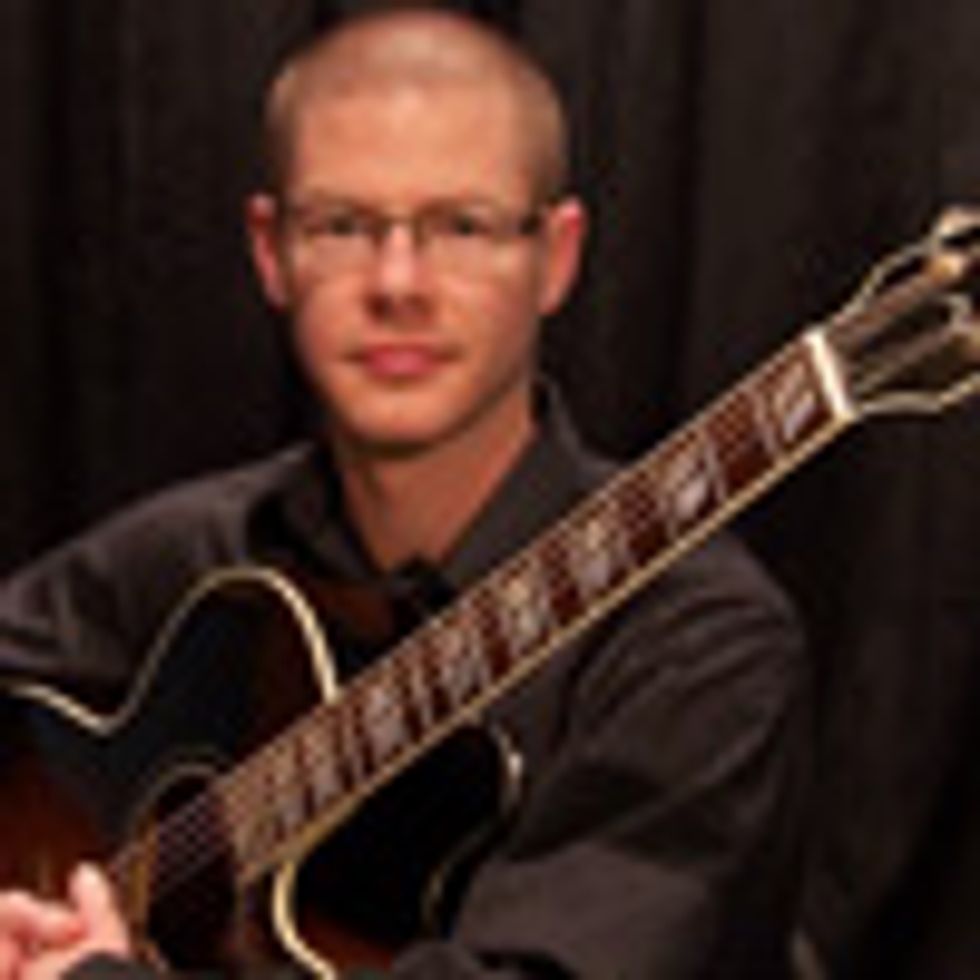 Mike Cramer
Mike CramerMike Cramer is an award-winning performer and educator. A stylistically versatile multi-instrumentalist, Cramer has shared the stage with or opened for B.B. King, Tommy Castro, Chris Duarte, Gordon Goodwin, John Hartford, and Steve Kaufman. Cramer co-founded All 12 Notes, LLC where he has a private lesson studio, teaching guitar, mandolin, and electric bass. His most recent CD release, Open Spaces, is a collection of original and traditional acoustic pieces. For more information, visit all12notes.com.
